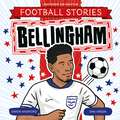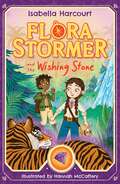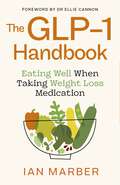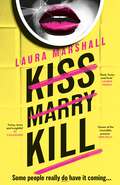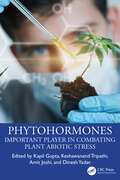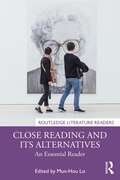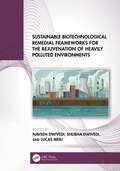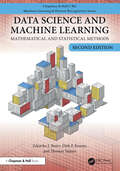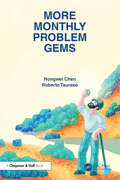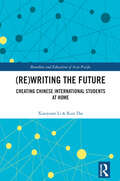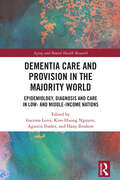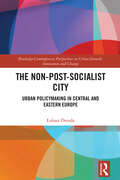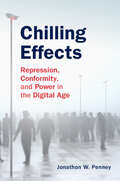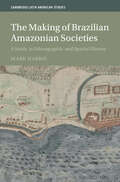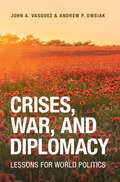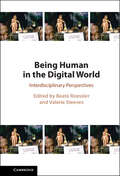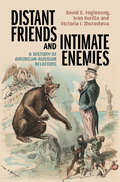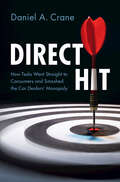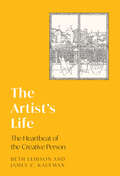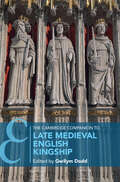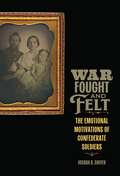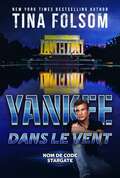- Table View
- List View
Bellingham (Football Stories #11)
by Simon MugfordSay hi to Jude Bellingham, one of England's football superstars! This fantastic, fully illustrated unofficial picture book is based on the best-selling Football Superstars series. Inside, young readers will find the whole story of Bellingham's rise to fame, from a young player in his local club to the heights of a Real Madrid and England career. It's the perfect book for young Bellingham fans!
Flora Stormer and the Wishing Stone: Book 4 (Flora Stormer #4)
by Isabella HarcourtFlora Stormer is off on another adventure! The next book in the exciting series combining the magic and adventure of Jumanji with a message celebrating difference and self-acceptance.Flora Stormer's friend Pavan has invited her on an adventure of a lifetime to his homeland of India! His long-lost sister Naya, a famous explorer, has got in touch to ask for his help. She tells them about a magic stone that grants wishes to anyone who touches it - but it's been lost for hundreds of years. Pavan thinks this stone is his only chance to get his family back and is determined to find it.But getting this stone is no easy task. They'll have to trek through forests, face dangerous storms and avoid terrifying animals! And there's something about Naya that makes Flora suspicious . . . Can Flora find the wishing stone and help Pavan, or will it be lost in the forest forever?Praise for Flora Stormer and the Golden Lotus:"A fun, pacy story with a delightful heroine and a powerful message," Cath Howe, author of Ella on the Outside."There's a little bit of magic and a whole lot of heart in Flora's inspiring adventure!" Lucy Strange, author of Our Castle by the Sea.
The GLP-1 Handbook: Eating well when taking weight loss medication
by Ian MarberOzempic, Wegovy, Mounjaro and Saxenda all promise weight loss, but how can we eat well when we're eating less?Taking weight-loss medication can be transformative as it offers liberation from a lifetime of dieting. But when you have a smaller appetite, good nutrition often takes a backseat - and it's common to miss out on the vital nutrients needed to build long-term health.Drawing on twenty-five years of clinical experience, nutrition expert Ian Marber shares evidence-backed guidance, simple day-to-day menu ideas and supplement advice to help you eat well when eating less. Ian's holistic approach to wellbeing prioritises protecting muscle and managing side-effects so that you can build lasting health while losing weight.The GLP-1 Handbook is your essential guide to understanding how the medication works, what to expect and how to adapt your diet and lifestyle - because weight loss should never come at the cost of your wellbeing.With a foreword by Dr Ellie Cannon
Kiss Marry Kill: the gripping new thriller from the #1 bestseller
by Laura MarshallThree best friends. One life-changing choice. KissAngela runs a dating agency and is an expert at connecting over fifties looking for the one.MarrySara has lost her husband and is forcing herself to speed-date in the hope of finding love again.KillHelen lives with her controlling partner, Brian - but she's been keeping his abusive behaviour a secret from her friends.Until she can't hide it any longer.Not long after telling her friends the truth, Brian has a shocking accident - and all three women are implicated. Sure, they all wanted to see him dead. But they couldn't be capable of murder. Could they?Every romance ends one of three ways. It's kiss, marry - or kill...
Phytohormones: Important Player in Combating Plant Abiotic Stress
by Kapil Gupta Amit Joshi Dinesh Yadav Keshawanand TripathiPlant hormones regulate development and physiological status of plants, including stress responses to abiotic and biotic stresses. Numerous phytohormonal signaling-based processes have been exploited for obtaining stress-tolerant or stress-resistant plants and improved crop vigor and productivity. Recent advances in gene editing technologies like CRISPR/Cas9 has opened new areas of plant biotechnological approaches for improving plant/crop variety and stress tolerance.Phytohormones: Important Player in Combating Plant Abiotic Stress provides an updated understanding of plant hormone biology, signaling, cross-talk among different plant hormones under multiple environmental stresses, along with latest biotechnological approaches, functional genomics, and gene editing examples of phytohormonal signaling to obtain stress tolerance in plants.Aimed at a diverse readership, including plant and algal biotechnology researchers, stress biologists, scientists, educators, and students, the book serves as a valuable resource for those interested in plant physiology, molecular biology, and biotechnology. Its comprehensive coverage of phytohormonal roles in stress responses makes it pertinent for both academic research and practical applications in agriculture and environmental sciences.Features:· In-Depth Analysis of Phytohormone Functions.· Exploration of Hormonal Crosstalk Under Stress Conditions.· Functional Genomics and Phytohormonal Signaling.· Advances in Gene Editing Technologies.· Physiological Significance in Algal Stress Responses.This book serves as a reference book for researchers and scientific investigators and may also be used as a textbook for a postgraduate and graduate-level students that need to understand the physiology and molecular biology of abiotic stress tolerance.
Close Reading and Its Alternatives: An Essential Reader (Routledge Literature Readers)
by Mun-Hou LoClose Reading and Its Alternatives provides an up-to-date and consolidated history of the literary and analytical technique and philosophy of close reading. It offers an essential guide to the features and genealogies of close reading, and how it intersects with literary theories like feminist criticism, queer theory, cultural studies, digital humanities, game studies, and more.Divided into five parts, the book contains 21 influential essays on close reading and on alternative methods that have arisen in the past few decades. These primary texts are contextualized by and analyzed in six original and insightful introductions. These works combine to trace the invention of close reading around the time of New Criticism. The book then shows how close reading evolved when it is taken up by poststructuralist thought, such as Marxism, deconstruction, and New Historicism. Turning to the twenty-first century, the volume explores the rise of the critiques of close reading that are distinguished by their attempts to offer alternative methods: distant reading; reparative reading, just and surface reading, and thin description; and too-close reading.Close reading is inescapably central in the field of literary studies, and beyond. This comprehensive resource will enhance understanding and enrich the reading experience of students and teachers of literature.
Sustainable Biotechnological Remedial Frameworks for the Rejuvenation of Heavily Polluted Environments
by Lucas Meili Naveen Dwivedi Shubha DwivediThis book discusses advanced research in mitigation of heavily polluted environments through a sustainable biotechnological remedial framework along with their role in betterment of conventional treatment methods. It includes a sustainable biotechnology-based approach to rejuvenate the heavily polluted environment, highlighting the technical, scientific, regulatory, safety, and societal impacts. It discusses current sustainable solutions and contemporary challenges of bioremediation of environmental pollutants using biotechnology-based interventions.Features: Provides understanding of biotechnology-based sustainable framework and its potential in rejuvenation of heavily polluted environments. Discusses nature-based solutions as a sustainable tool for net-zero emission transition and emerging economies. Provides the latest information and innovative scaffold as a support tool for fixing the heavily polluted environmental issues in a sustainable way. Sheds light on future research needs on advances of biotechnological intervention in managing the complicated environmental issues. Highlights the importance of multi-disciplinary research and integrated bioengineering systems. This book is aimed at graduate students and researchers in waste management, environmental engineering, biotechnology and clean technologies.
Data Science and Machine Learning: Mathematical and Statistical Methods, Second Edition (Chapman & Hall/CRC Machine Learning & Pattern Recognition)
by Dirk P. Kroese Thomas Taimre Zdravko BotevPraise for the first edition:“In nine succinct but information-packed chapters, the authors provide a logically structured and robust introduction to the mathematical and statistical methods underpinning the still-evolving field of AI and data science.”- Joacim Rocklöv and Albert A. Gayle, International Journal of Epidemiology, Volume 49, Issue 6“This book organizes the algorithms clearly and cleverly. The way the Python code was written follows the algorithm closely—very useful for readers who wish to understand the rationale and flow of the background knowledge.”- Yin-Ju Lai and Chuhsing Kate Hsiao, Biometrics, Volume 77, Issue 4The purpose of Data Science and Machine Learning: Mathematical and Statistical Methods is to provide an accessible, yet comprehensive textbook intended for students interested in gaining a better understanding of the mathematics and statistics that underpin the rich variety of ideas and machine learning algorithms in data science.New in the Second EditionThis expanded edition provides updates across key areas of statistical learning: Monte Carlo Methods: A new section introducing regenerative rejection sampling - a simpler alternative to MCMC. Unsupervised Learning: Inclusion of two multidimensional diffusion kernel density estimators, as well as the bandwidth perturbation matching method for the optimal data-driven bandwidth selection. Regression: New automatic bandwidth selection for local linear regression. Feature Selection and Shrinkage: A new chapter introducing the klimax method for model selection in high-dimensions. Reinforcement Learning: A new chapter on contemporary topics such as policy iteration, temporal difference learning, and policy gradient methods, all complete with Python code. Appendices: Expanded treatment of linear algebra, functional analysis, and optimization that includes the coordinate-descent method and the novel Majorization–Minimization method for constrained optimization. Key Features: Focuses on mathematical understanding. Presentation is self-contained, accessible, and comprehensive. Extensive list of exercises and worked-out examples. Many concrete algorithms with Python code. Full color throughout and extensive indexing. A single-counter consecutive numbering of all theorems, definitions, equations, etc., for easier text searches.
More Monthly Problem Gems
by Hongwei Chen Roberto TaurasoMore Monthly Problem Gems is a sequel to Monthly Problem Gems (CRC Press, 2021). This book covers a broader range of math problems. In addition to analysis problems, problems from number theory, combinatorics, algebra, and geometry are included. The book offers problems to promote creative techniques for problem-solving and undergraduate research. Each problem is selected for its natural charm, the connection with an authentic mathematical experience, originating from the ingenious work of professionals, and ready developments, all into well-shaped results of broader interest. Each problem provides either a novel application of a familiar theorem or a lively discussion of multiple solutions. Special attention is paid to informal exploration of the essential assumptions, suggestive heuristic considerations, and roots of the motivations of the problem. This text then presents a new type of problem-solving. It will challenge and stimulate math problem-solvers at varying degrees of proficiency. Since the selected problem gems contain sophisticated ideas and connect to important current research, this book is also geared toward graduate students in math and engineering. Many of the problems in this book were originally offered in The American Mathematical Monthly.
**Missing**: Creating Chinese International Students at Home (Bourdieu and Education of Asia Pacific)
by Kun Dai Xiaoyuan LiSince the implementation of the Open Door Policy, studying abroad, or Chinese Liuxue, has undergone significant transitions. This book reveals how Chinese students prepare for Western universities through international schooling. It explores their motivations and strategies within China’s evolving educational landscape.Using surveys, interviews, field observations, and policy analysis, the authors uncover how families navigate the tension between meritocracy and global higher education. Through an innovative approach to analyzing students’ pre-mobility experiences, the authors trace students’ pathways through international schools and agencies, showing how these institutions bridge the Chinese and Western educational systems. Key insights include the ‘field-habitus match’ concept, which explains successful and complex transitions, and how international education adapts to local values.This book is an essential resource for educators, international school administrators, policymakers, and scholars of the sociology of education, transnational studies, and Asian education. It is also useful for librarians and professionals in global student services.
Dementia Care and Provision in the Majority World: Epidemiology, Diagnosis and Care in Low- and Middle-income Nations (Aging and Mental Health Research)
by Iracema Leroi Kim-Huong Nguyen Hany Ibrahim Agustin IbañezThis novel volume offers a comprehensive examination of dementia epidemiology, diagnosis, and care across lower- and middle-income countries (LMICs), particularly exploring diverse and culturally inclusive perspectives on understanding, diagnosing, and managing dementia.Arguing that living well with dementia, tailoring research and interventions to local contexts, and prioritising primary and secondary prevention efforts are of critical importance to the health outcomes of those affected by dementia, this book goes beyond common approaches in high-health-resourced regions to explore health disparities, societal and cultural influences, and economic inequities often present in regions of LMICs. Truly international, these chapters champion a pluralistic and multi-dimensional approach, taking diverse and culturally relevant aspects into consideration to review the challenges and advancements in dementia care. Ultimately, the necessity for diverse and equitable approaches across regions is emphasised.This book will be of interest to scholars, researchers, and postgraduate students in the fields of dementia research, gerontology and ageing within LMICs, as well as the sociology of health and illness more broadly, including the global health ecosystem. The book may also appeal to clinicians who are developing dementia services.
The Non-Post-Socialist City: Urban Policymaking in Central and Eastern Europe (Routledge Contemporary Perspectives on Urban Growth, Innovation and Change)
by Łukasz DrozdaThe Non-Post-Socialist City examines contemporary urban policies through case studies of six cities in four states across Central and Eastern Europe and Former Soviet Union (CEE/FSU) region.This book adopts a rarely used approach in the study of so-called post-socialist cities—combining several years of in-depth empirical research with a broad comparative frame. Building on this foundation, it analyzes urban policymaking processes in Leipzig (Germany), Warsaw and Krakow (Poland), Tallinn (Estonia), and Kyiv and Lviv (Ukraine). The monograph interprets these dynamics through the author’s concept of diluted post-socialism, which highlights not only trajectories rooted in the Soviet-dominated era but also a range of pre- or nonsocialist legacies that interact with—and often complicate—the few decades of now-defunct state-socialist rule. Particular attention is given to four policy fields: mobility, green infrastructure, housing, and spatial planning. While these domains pose broadly similar dimensions across the six cities, their organization reveals a highly diverse urban landscape that is too often flattened under the “post-socialist” label.The book is intended for scholars, analysts, students, and anyone interested in urbanization processes in the former Eastern bloc, as well as in the impact of the global populist turn on urban policymaking within this region and in a broader urban context.
Chilling Effects: Repression, Conformity, and Power in the Digital Age
by Jonathon W. PenneyIn Chilling Effects, Jonathon W. Penney explores the increasing weaponization of surveillance, censorship, and new technology to repress and control us. With corporations, governments, and extremist actors using big data, cyber-mobs, AI, and other threats to limit our rights and freedoms, concerns about chilling effects – or how these activities deter us from exercising our rights – have become urgent. Penney draws on law, privacy, and social science to present a new conformity theory that highlights the dangers of chilling effects and their potential to erode democracy and enable a more illiberal future. He critiques conventional theories and provides a framework for predicting, explaining, and evaluating chilling effects in a range of contexts. Urgent and timely, Chilling Effects sheds light on the repressive and conforming effects of technology, state, and corporate power, and offers a roadmap of how to respond to their weaponization today and in the future.
The Making of Brazilian Amazonian Societies: A Study in Ethnographic and Spatial History (Cambridge Latin American Studies)
by Mark HarrisAmazonia presents the contemporary scholar with myriad challenges. What does it consist of, and what are its limits? In this interdisciplinary book, Mark Harris examines the formation of Brazilian Amazonian societies in the seventeenth and eighteenth centuries, focusing predominantly on the Eastern Amazon, what is today the states of Pará and Amapá in Brazil. His aim is to demonstrate how the region emerged through the activities and movements of Indigenous societies with diverse languages, cultures, individuals of mixed heritage, and impoverished European and African people from various nations. Rarely are these approaches and people examined together, but this comprehensive history insightfully illustrates that the Brazilian Amazon consists of all these communities and their struggles and highlights the ways the Amazon has been defended through partnership and alliance across ethnic identities.
Selling Healing: Creative Arts and Health Communication in Ghana
by Ama de-Graft AikinsThe intersections between arts, creativity and health are of significant importance in the humanities and social sciences. Arts and health research, for example, suggests that the arts offer participatory and transformational alternatives to traditional health communication. However, concepts and methods are predominantly informed by Global North research, and critical insights from arts traditions elsewhere remain to be fully integrated into common models. Ghana offers a unique case study for examining local and global dynamics in arts-based health communication, because of the country's rich art traditions as well as its place in global history and in the global imagination. Healing art forms like music and sculpture have evolved through intentional cross-cultural borrowings, as well as through changes imposed through slavery, colonialism and post-colonial political systems. Selling Healing tells a polyvocal story of how Ghanaian art forms intersect with health, illness and healing, inviting a re-imagining of health communication in global health.
Crises, War, and Diplomacy: Lessons for World Politics
by John A. Vasquez Andrew P. OwsiakWhy do some international crises between major states escalate to war while others do not? To shed light on this question, this book reviews fifteen such crises during the period 1815–present, including the Crimean War, The Franco-Prussian War, the Cuban Missile Crisis, and the 2022 Russia-Ukraine War. Each chapter places the crisis at hand in its historical context, provides a narrative of the case's events that focuses on the decision-makers involved, theoretically analyses the case's outcome in light of current research, and inductively draws some lessons from the case for both scholars and policymakers. The book concludes by exploring common patterns and drawing some broader lessons that apply to the practice of diplomacy and international relations theory. Integrating qualitative information with the rich body of quantitative research on interstate war and peace, this unique volume is a major contribution to crisis diplomacy and war studies.
Being Human in the Digital World: Interdisciplinary Perspectives
by Valerie Steeves Beate RoesslerBeing Human in the Digital World is a collection of essays by prominent scholars from various disciplines exploring the impact of digitization on culture, politics, health, work, and relationships. The volume raises important questions about the future of human existence in a world where machine readability and algorithmic prediction are increasingly prevalent and offers new conceptual frameworks and vocabularies to help readers understand and challenge emerging paradigms of what it means to be human. Being Human in the Digital World is an invaluable resource for readers interested in the cultural, economic, political, philosophical, and social conditions that are necessary for a good digital life. This title is also available as Open Access on Cambridge Core.
Distant Friends and Intimate Enemies: A History of American-Russian Relations
by Ivan Kurilla Victoria I. Zhuravleva David S. FoglesongThis bold, sweeping history of the turbulent American-Russian relationship is unique in being written jointly by American and Russian authors. David Foglesong, Ivan Kurilla and Victoria Zhuravleva together reveal how and why America and Russia shifted from being warm friends and even tacit allies to being ideological rivals, geopolitical adversaries, and demonic foils used in the construction or affirmation of their national identities. As well as examining diplomatic, economic, and military interactions between the two countries, they illuminate how filmmakers, cartoonists, writers, missionaries and political activists have admired, disparaged, lionized, envied, satirized, loved, and hated people in the other land. The book shows how the stories they told and the images they created have shaped how the two countries have understood each other from the eighteenth century to the present and how often their violent clashes have arisen from mutual misunderstanding and misrepresentations.
Direct Hit: How Tesla Went Straight to Consumers and Smashed the Car Dealers' Monopoly
by Daniel A. CraneSince 2013, Elon Musk has been at war with car dealers in the United States. Battles have played out in legislative backrooms, courtrooms, governors' offices, and news media outlets across the country. As of now, Musk has won the war. Telsa has established a foothold across the country, sold over 2 million cars without using a dealer, established a loyal customer base, and overcome most states' franchise dealer laws. Direct Hit tells the story of this fight, taking readers into courtrooms and legislative halls where the dealers tried in vain to derail Tesla's advances. The book shares key insights on the strategic choices made by dealers, legacy car companies, and electric-vehicle startups. With a combination of historical narrative, blow-by-blow accounts of the Tesla wars, and a consideration of America's longstanding romance with the personal automobile, Direct Hit shares a uniquely American drama over cars and the people who sell them.
The Artist's Life: The Heartbeat of the Creative Person
by James C. Kaufman Beth LeibsonThis book delves into the lives, growth, and inner workings of creative artists, sharing stories about the lives of those who have built their career in the arts. Drawing from interviews with more than 60 expert artists from varied domains - including Oscar, Grammy, Emmy, and Pulitzer Prize winners - these detailed, intimate, and surprising anecdotes shed light on creativity from both personal and professional perspectives. Chapters focus on the influences of family and school on creativity, through early discoveries and passions that led to growth and development. In their own words, interviewees describe the joys of 'making it' in the creative world alongside the realities of the business, from finances to relationships and possible legacies. Taking a narrative approach that reveals the hidden truths about being a creative artist, this book offers a unique window on creativity for researchers and artists alike.
The Cambridge Companion to Late Medieval English Kingship (Cambridge Companions to History)
by Gwilym DoddFor over a hundred years scholars have written about late medieval kingship, and a vast body of published work now exists on the subject. However, in all this rich coverage, no accessible introduction to the subject exists. The Cambridge Companion to Late Medieval Kingship addresses this need by bringing together, within a single volume, a series of themed chapters which consider key aspects of the workings of the English monarchy between 1200 and 1500. Featuring leading experts in the field, each chapter provides a concise and accessible guide, offering insights, synthesis and explanation to help readers understand not only how kings ruled, but also what made their rule more – or less – effective. By adopting a holistic approach to kingship, the contributors also consider how kingship impacted on the king's subjects, thereby illuminating the complex interplay of cooperation and conflict that shaped both the monarchy and the wider polity in late medieval England.
Debts Unpaid: Two Centuries of Trouble and Conflict in Mexico's Economy (Cambridge Latin American Studies)
by Louise E. WalkerPower struggles between debtors and creditors about unpaid debts have animated the history of economic transformation from the emergence of capitalist relations to the recent global financial crashes. Illuminating how ordinary people fought for economic justice in Mexico from the eve of independence to the early 2000s, this study argues that conflicts over small-scale debts were a stress test for an emerging economic order that took shape against a backdrop of enormous political and social change. Drawing on nearly 1,500 debt conflicts unearthed from Mexican archives, Louise E. Walker explores rapidly changing ideas and practices about property rights, contract law, and economic information. This combination of richly detailed archival research, with big historical and theoretical interpretations, raises provocative new questions about the moral economy of the credit relationship and the shifting line between exploitation and opportunity in the world of everyday exchange.
War Fought and Felt: The Emotional Motivations of Confederate Soldiers (Conflicting Worlds: New Dimensions of the American Civil War)
by Joshua R. ShiverJoshua R. Shiver’s War Fought and Felt advances our grasp of the links between masculinity, emotion, and relationships during the American Civil War. It is the first broadly researched, multidisciplinary, and statistically supported approach to understanding the pivotal role of emotions in the everyday lives of Confederate soldiers. Using a source base of more than 1,790 letters and diaries from two hundred Confederate soldiers from North Carolina and Alabama, it builds upon traditional sociocultural and ideological arguments for why Confederate soldiers fought. Drawing on history, psychology, sociology, philosophy, and neuroscience, it underscores the necessity of examining primal emotions when looking to understand soldiers’ motivations. It argues that the heightened emotions felt by these soldiers drove them to suffer, fight, desert, and willingly die.Shiver examines the vital role of emotions within the context of soldiers’ relationships with their parents, children, wives, sweethearts, and comrades. These relationships and the emotions they engendered defined Confederate soldiers’ firsthand experiences of war and ultimately redefined the Confederate cause itself. A war that began steeped in ideology ended, for the soldiers, as one fought for the protection and future of one’s loved ones. Shiver demonstrates that the emotionally overwhelming nature of the war forced a tectonic shift in American masculinity in which the prewar emphasis on stoic individualism gave way to an outpouring of emotional expression and mutual interdependence. As a result, Confederate soldiers pragmatically embraced emotional and relational norms that were previously considered taboo.By placing emotion alongside traditional ideological and sociocultural explanations for motivation, Shiver sheds light on a new area of research that promises to promote a deeper understanding of why the American Civil War was one of the bloodiest, most emotionally influential, and world-changing events of the last two centuries.
The Definitive Guide to Microsoft Fabric: From discovery to building a unified, secure, and scalable data platform
by Christopher Maneu Emilie Beau Jean-Pierre Riehl Romain Casteres Frederic GisbertMaster Microsoft Fabric from basics to advanced architectures with expert guidance to unify, secure, and scale analytics on real-world data platformsKey FeaturesBuild a complete data analytics platform with Microsoft FabricApply proven architectures, governance, and security strategiesGain real-world insights from five seasoned data expertsPurchase of the print or Kindle book includes a free PDF eBookBook DescriptionMicrosoft Fabric is reshaping how organizations manage, analyze, and act on data by unifying ingestion, storage, transformation, analytics, AI, and visualization in a single platform. The Definitive Guide to Microsoft Fabric takes you from your very first workspace to building a secure, scalable, and future-proof analytics environment. You’ll learn how to unify data in OneLake, design data meshes, transform and model data, implement real-time analytics, and integrate AI capabilities. The book also covers advanced topics, such as governance, security, cost optimization, and team collaboration using DevOps and DataOps principles. Drawing on the real-world expertise of five seasoned professionals who have built and advised on platforms for startups, SMEs, and Europe’s largest enterprises, this book blends strategic insight with practical guidance. By the end of this book, you’ll have gained the knowledge and skills to design, deploy, and operate a Microsoft Fabric platform that delivers sustainable business value.What you will learnUnderstand Microsoft Fabric architecture and conceptsUnify data storage and data governance with OneLakeIngest and transform data using multiple Fabric toolsImplement real-time analytics and event processingDesign effective semantic models and reportsIntegrate AI and machine learning into data workflowsApply governance, security, and compliance controlsOptimize performance and costs at scaleWho this book is forThis book is for data engineers, analytics engineers, architects, and data analysts moving into platform design roles. It’s also valuable for technical leaders seeking to unify analytics in their organizations. You’ll need only a basic grasp of databases, SQL, and Python.
Yankee dans le Vent (Nom de Code Scanguards)
by Tina FolsomEn enquêtant sur la mort de son collègue agent de Stargate, Jack « Yankee » Porter rencontre la cousine du défunt, Lilly Davis, qui s'interroge sur les circonstances de la mort de son cousin. En suivant les indices, Yankee et Lilly ne peuvent que constater que le mystérieux M. Smith, qui chasse les anciens agents de Stargate, prévoit quelque chose d'encore plus infâme que la mort pour les agents de l'ancien programme top secret de la CIA : se servir d'eux dans le but de nuire. Nom de Code Stargate Ace en Fuite (#1) Fox en Vue (#2) Yankee dans le Vent (#3) Tiger à l'Affût (#4) Hawk en Chasse (#5) Hors de l'Olympe Une Touche de Grec (#1) Un Parfum de Grec (#2) Un Goût de Grec (#3) Un Souffle de Grec (#4) Gardiens de la Nuit Amant Révélé (#1) Maître Affranchi (#2) Guerrier Bouleversé (#3) Gardien Rebelle (#4) Immortel Dévoilé (#5) Protecteur Sans Égal (#6) Démon Libéré (#7) Les Vampires Scanguards La belle mortelle de Samson (#1) La provocatrice d'Amaury (#2) La partenaire de Gabriel (#3) L'enchantement d'Yvette (#4) La rédemption de Zane (#5) L'éternel amour de Quinn (#6) Les désirs d'Oliver (#7) Le choix de Thomas (#8) Discrète morsure (#8 ½) L'identité de Cain (#9) Le retour de Luther (#10) La promesse de Blake (#11) Fatidiques Retrouvailles (#11 ½) L'espoir de John (#12) La tempête de Ryder (#13) La conquête de Damian (#14) Le défi de Grayson (#15) L'amour interdit d'Isabelle (#16) La passion de Cooper (#17) Le courage de Vanessa (#18) Les Vampires de Venise Nouvelle 1 : Raphael & Isabella Nouvelle 2 : Dante & Viola Nouvelle 3 : Lorenzo & Bianca Nouvelle 4 : Nico & Oriana Nouvelle 5 : Marcello & Jane La Quête du Temps Changement de Sort (#1) Présage du Destin (#2) Le Club des éternels célibataires Tome 1 : L'escort attitrée Tome 2 : L'amante attitrée Tome 3 : L'épouse attitrée Tome 4 : Une folle nuit Tome 5 : Une simple erreur Tome 6 : Une Touche de feu Thriller Témoin Oculaire
